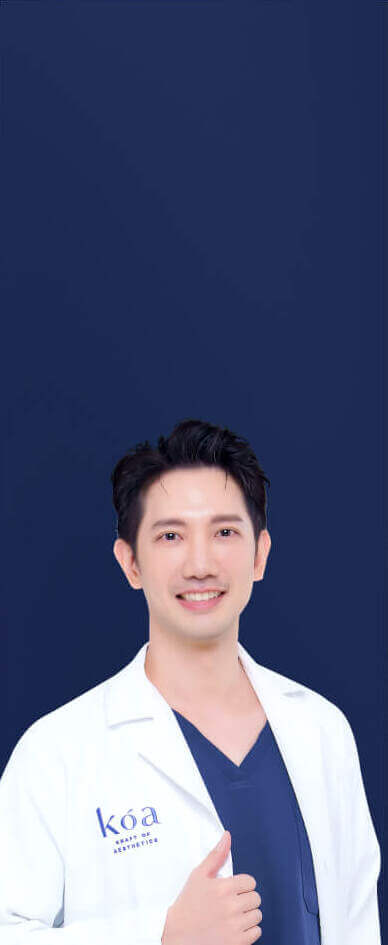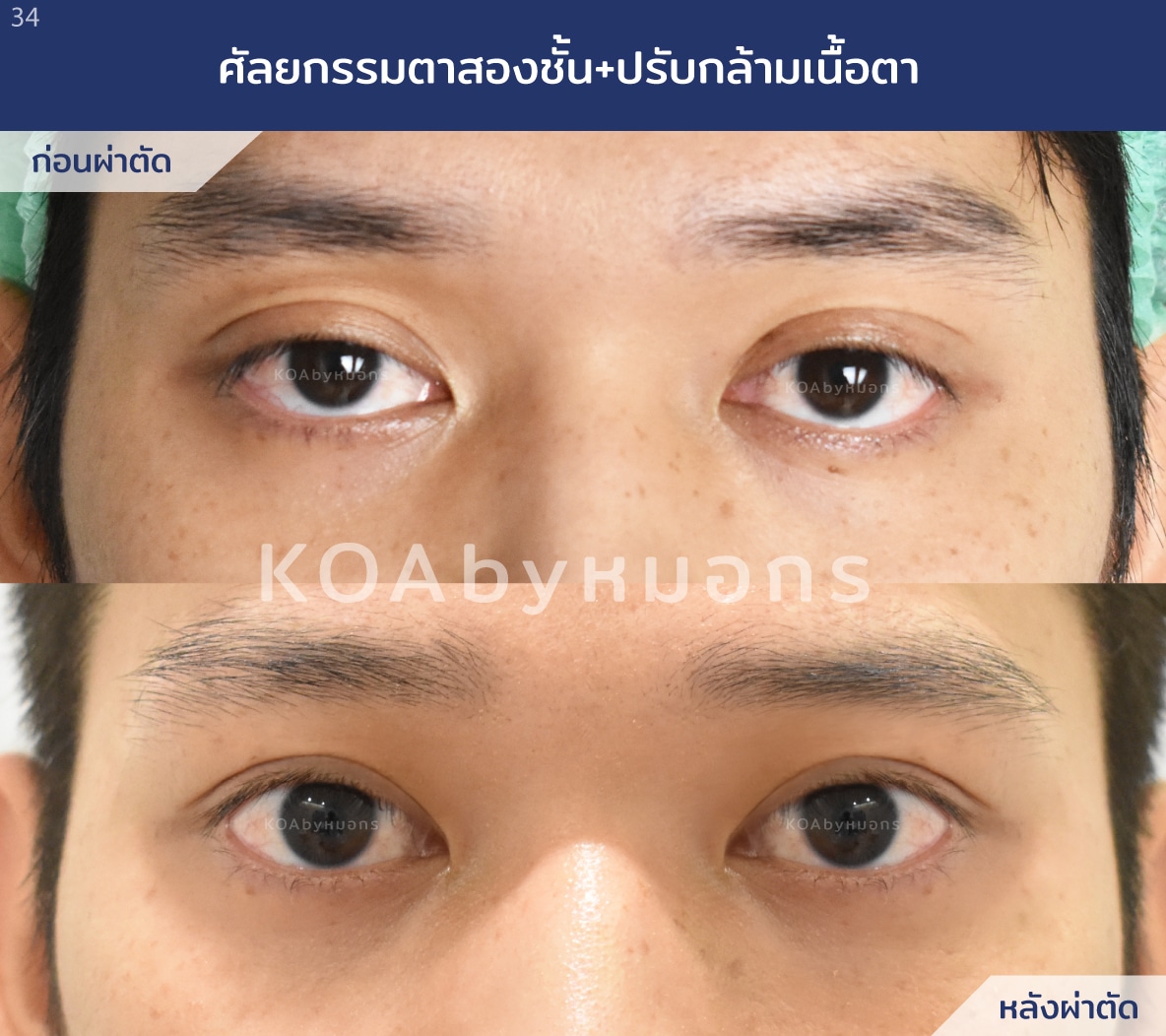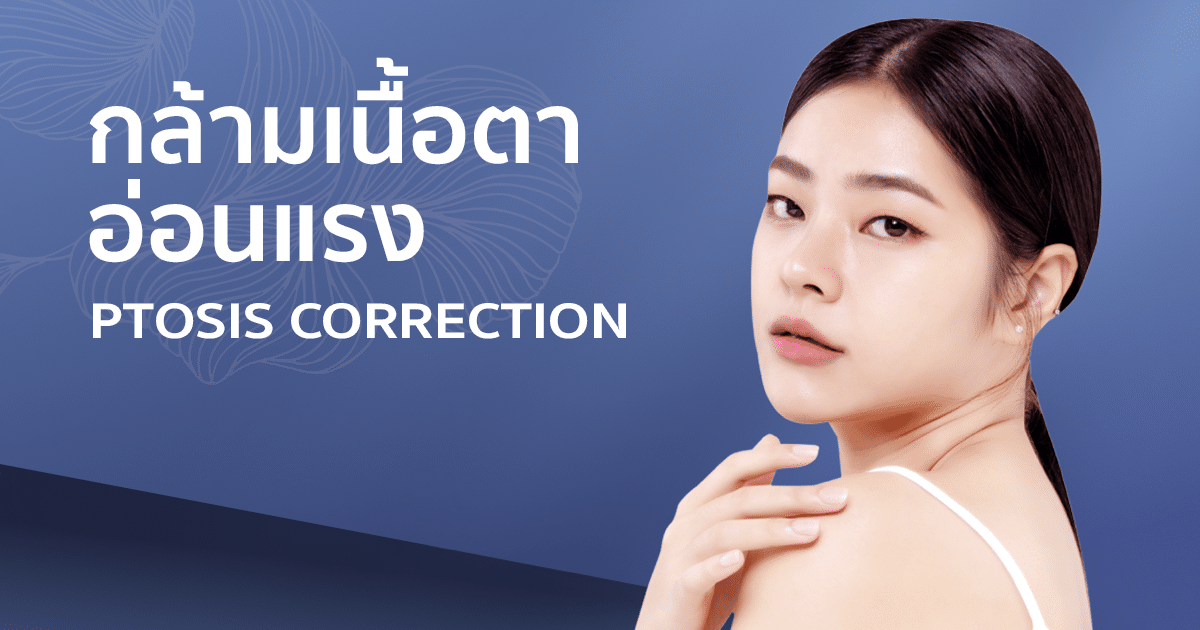

Ptosis Correction
Ptosis (droopy eyelid) can be a problem that not only affects one’s appearance, making the eyes look tired and less vibrant, but it can also impact vision by causing a narrowing of the visual field.
Why Trust KOA Clinic for Ptosis Correction?
- Widening eye appearance to enhance one’s overall appearance.
- Suitable for both mild cases (slight drooping) and more severe cases (excessive drooping that affects vision clarity).
- Diverse Correction Techniques are personalized for each individual’s specific causes.
KOA Clinic offers 3 distinct Ptosis Correction techniques customized to the unique needs of each patient to correct droopy or tired-looking eyes.
KOA’s Clinic Ptosis Correction Techniques
The 3 techniques for Ptosis Correction are:
1. External Approach
- Designing a new eyelid structure tailored to each individual’s needs.
- Making an incision from the outer aspect of the eyelid, passing through the skin to the eyelid muscles.
- Adjusting and enhancing the functionality of the eyelid-lifting muscle (levator palpebrae superioris) to reinforce and elevate the upper lid.
- Tuning and shaping the eyelid curvature for an aesthetically pleasing outcome.
- For sunken eyes, fat grafting may also be considered.
- Suturing incision.
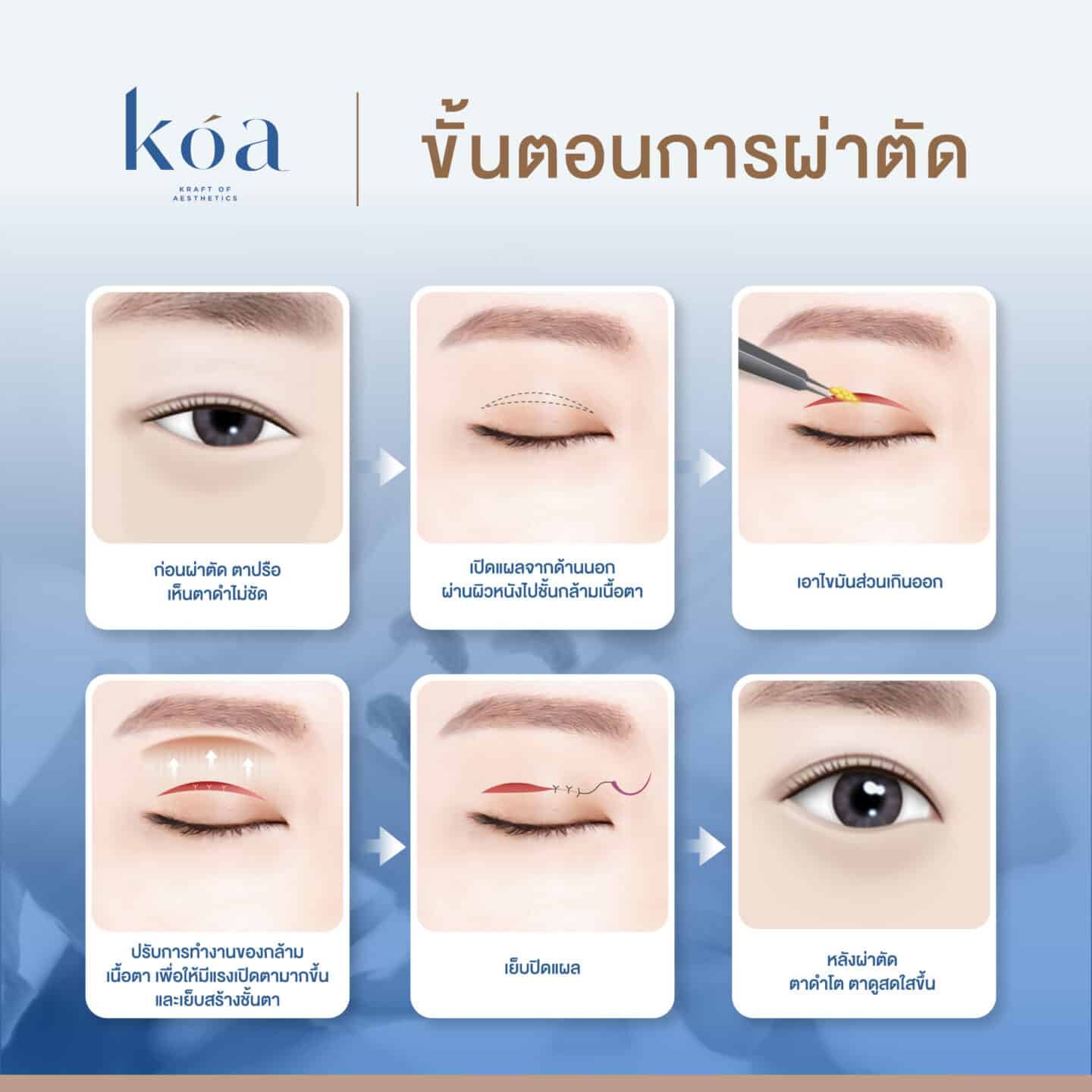
2. Internal Approach
- Flipping the eyelid from the inside and making an incision.
- Accessing the eyelid muscles and adjusting their function to make them stronger.
- Close incision with absorbable sutures.
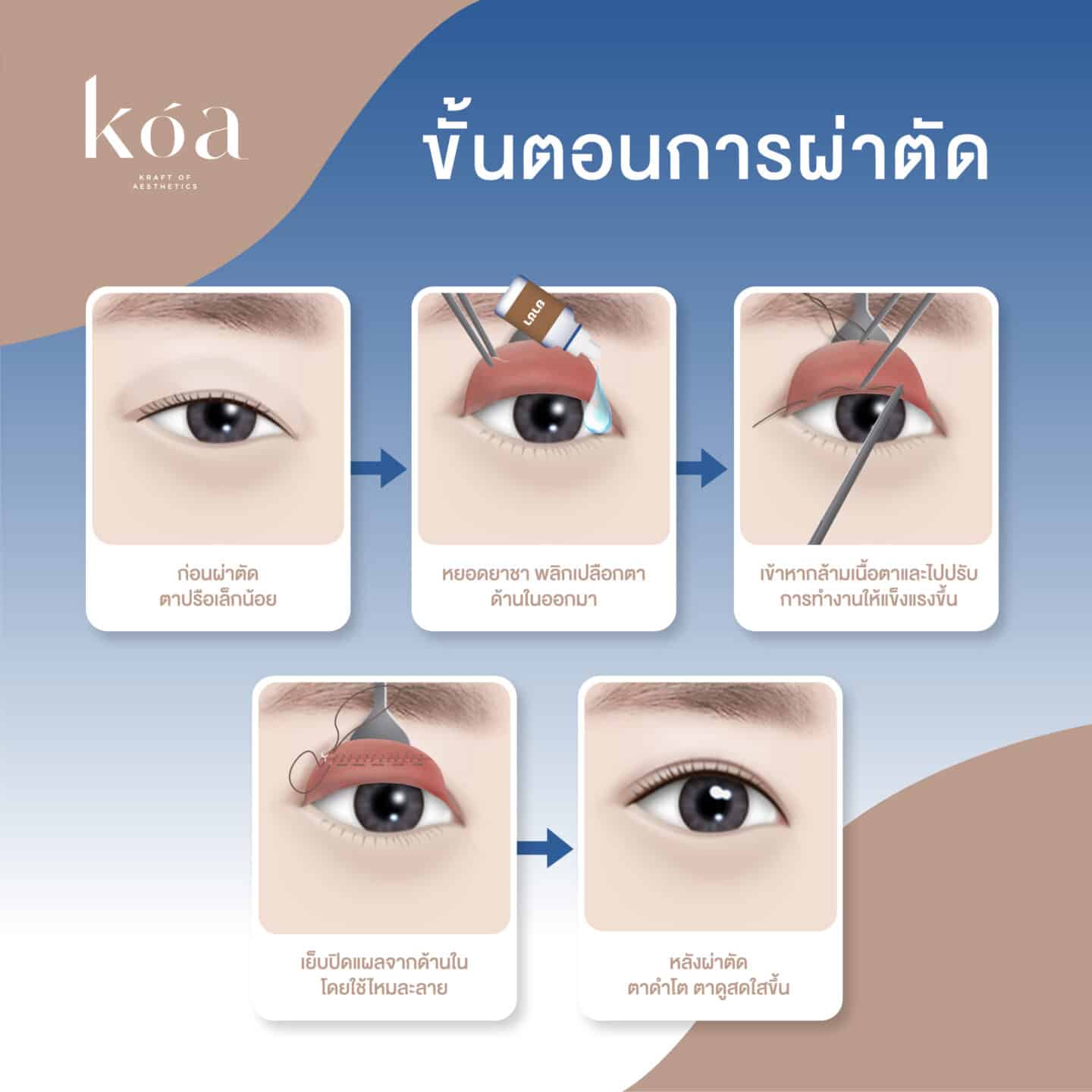
3. Advanced technique for severe cases or post-multiple surgeries
- Opening the incision from the outside, passing through the skin to the deep muscle layer.
- Identifying adjacent tissues such as deep tissue or conjoint tissue.
- Connecting these tissues to the eye’s framework to assist in lifting the eyelid in place of weakened eyelid muscles.
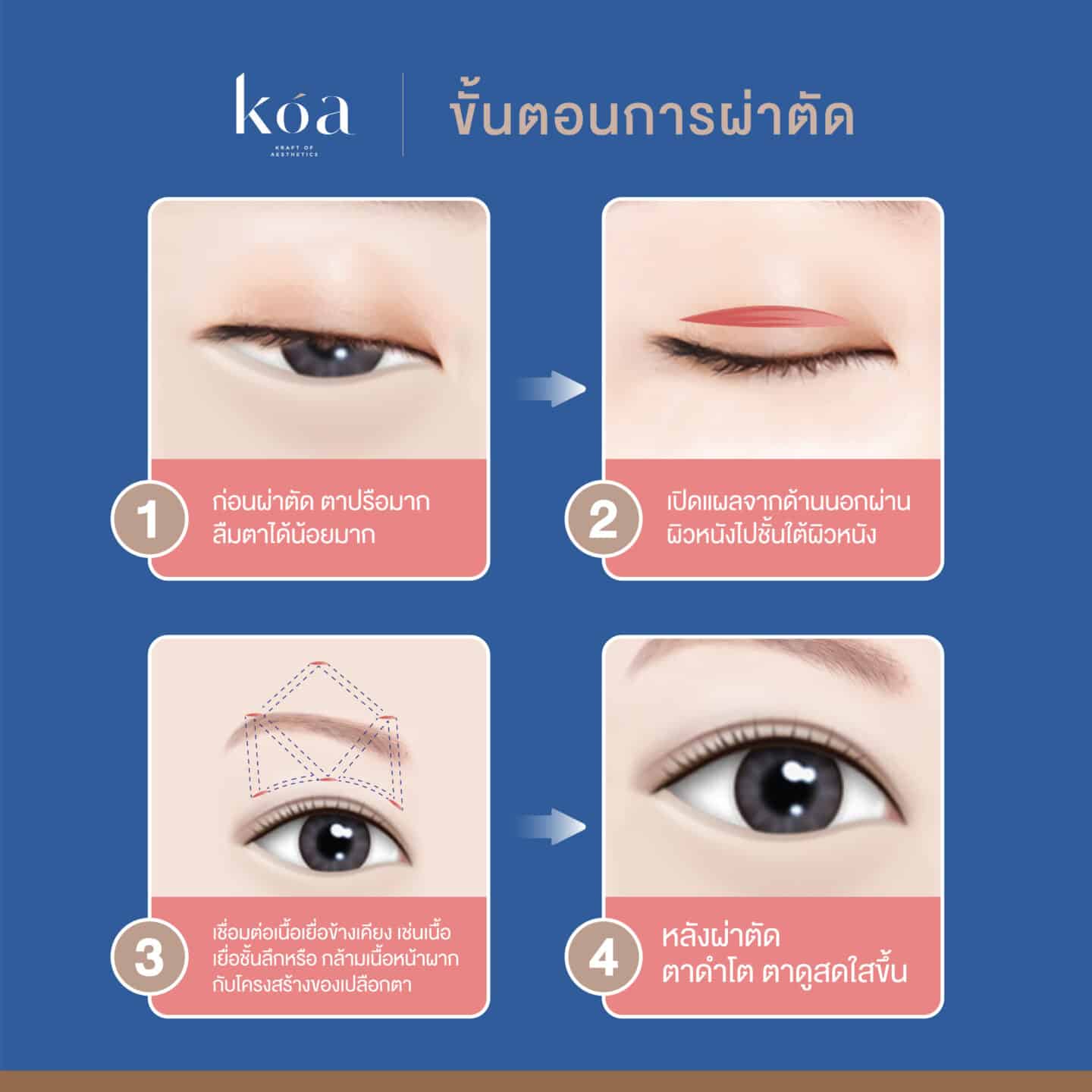
Table Comparing Three Ptosis Correction Techniques
| External Approach | Internal Approach | Frontalis Sling Fixation | |
| Surgery Duration | 2 hours | 45 mins | 2-3 hours |
| Perioperative Pain Management | Local anesthesia |
Anesthetic eyedrops Local anesthesia |
Local anesthesia |
| Suture Removal | 7 days | none | 7 days |
| Recovery period (Swelling phase) | 3-5 days | 1-2 days | 5-7 days |
| Post-Surgery Notes |
|
|
|
| Suitable For |
|
|
|
| Not Recommended For: |
|
|
|
Ptosis Correction Before/After Photos
Frequently Asked Questions (FAQs) About Ptosis Correction Surgery
-
The external approach can effectively address various types of Ptosis. For other techniques, it’s recommended to consult with a doctor for further advice.
-
These procedures differ in their goals. Double eyelid surgery aims to create well-defined double eyelid creases, while Ptosis correction aims to lift the eyelids for a fuller look. However, ptosis correction surgery often includes creating double eyelid creases as well.
-
Right after the surgery, you might experience blurry vision and slight discomfort. It’s recommended to use cold compresses and avoid heavy use of eyesight for about 2-3 days.
-
There are two things to keep in mind:
- Regular muscle exercises are necessary after the surgery for about 1-2 months, as advised by the doctor.
- Temporary incomplete eyelid closure might occur after the surgery, requiring frequent use of artificial tears to prevent dry eyes.
-
Temporary incomplete eyelid closure is due to tightened muscles. It usually improves gradually within 1-2 months after the surgery.
-
Muscles will gradually gain strength, and results will become noticeable around 2-3 weeks. The outcomes will stabilize around 4 months post-surgery.
-
Results can last for a long time unless factors like aging, chronic allergies, certain conditions (such as recurrent chalazion), extended contact lens wear, or unhealthy tissue formation affect eye muscle function.
-
The nervous system controlling eyelid muscles is complex. Surgeons carefully adjust the degree of symmetry for each eye during surgery. However, some factors may contribute to subtle differences in eyelid symmetry. Clinics provide follow-up appointments and care for up to a year.
-
Anxiety-reducing and pain-relieving medications are provided to minimize discomfort during and post-surgery.
Related services
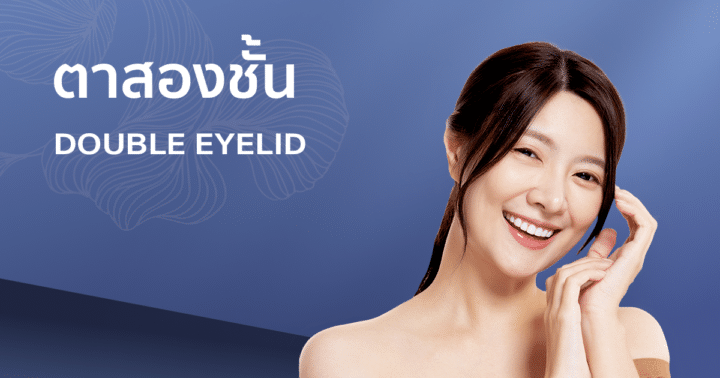
Double Eyelid
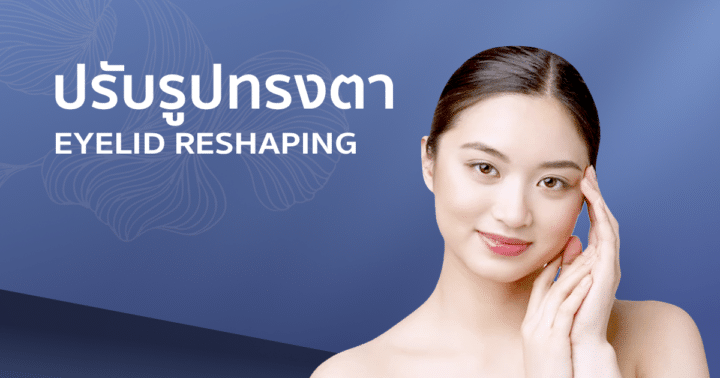
Eyelid Reshaping
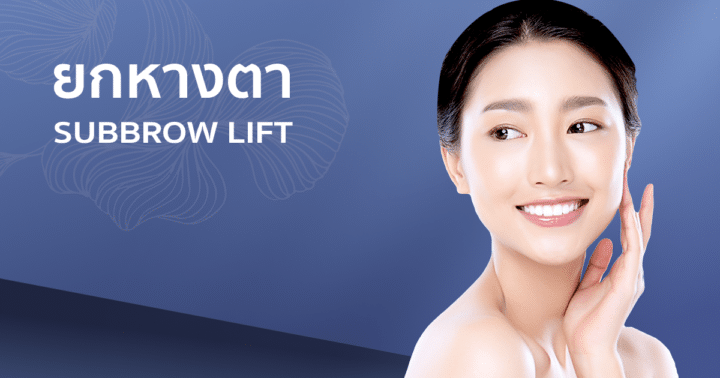
Subbrow Lift
